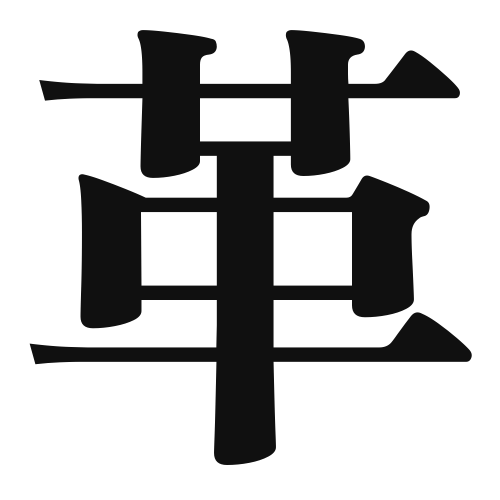1. Overview of Meaning
The kanji “革” (kawa) means “leather” or “reform.” It is often associated with materials made from animal hides and is also used metaphorically to indicate change or transformation in various contexts.
2. Formation and Radical
Formation of the Kanji: The kanji “革” is a pictogram that originally depicted the skin of an animal. It belongs to the category of ideograms as it conveys the concept of leather and transformation.
Radical: The radical for “革” is also “革,” which is used in other kanji related to leather and reform.
3. Examples of Usage
Common Words and Phrases: Some frequently used words that include “革” are:
- 革製品 (kawaseihin) – leather products
- 改革 (kaikaku) – reform
Example Sentences in Daily Conversation:
- このバッグは革でできています。 (Kono baggu wa kawa de dekiteimasu.) – This bag is made of leather.
- 私たちは教育改革が必要だと思います。 (Watashitachi wa kyōiku kaikaku ga hitsuyō da to omoimasu.) – I think we need educational reform.
4. Synonyms and Antonyms
Similar Kanji: A similar kanji is “皮” (kawa), which means “skin” and refers to the outer layer of an animal, while “革” specifically refers to processed leather.
Antonyms: An antonym could be “古” (ko), meaning “old,” as “革” often implies newness or change.
5. Cultural and Historical Background
Relation to Japanese Culture: In Japanese culture, leather has been used for various traditional items, such as clothing and accessories. The concept of “革” also ties into the idea of personal and societal reform, reflecting Japan’s historical transformations.
Proverbs and Idioms: One common saying is “革新” (kakushin), meaning “innovation,” which emphasizes the importance of change and progress in society.
